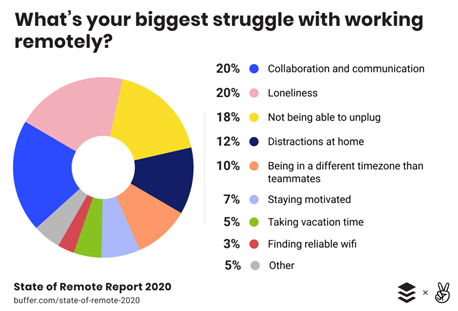AUSTRALIA
INDEPENDENT PARTNER
INDEPENDENT PARTNER

Thanks to https://unsplash.com/@wildlittlethingsphoto for the great photo
During the past nine months in Australia, many people’s businesses have been hit hard by the pandemic. Here at GPI, our thoughts are with the more than 900 families who lost loved ones during this crisis and for those whose livelihoods have been negatively impacted.
Recently though, some green shoots of hope have begun to sprout with domestic flying making a return, vaccines becoming available, and borders reopening in time for Christmas, it appears business conditions will significantly improve in 2021.
With increased demand will come the need to hire additional people, but how can you increase your success rate and hire the right people the first time? And what about the new way of working from home? How will you identify those who will thrive and be productive in a work from home environment?
The traditional recruitment process leaves a lot up to chance. You might sift through a stack of resumes and possibly cover letters trying to narrow down the people with the right experience and qualifications and get a sense of other relevant aspects. You’ll then perform a round of interviews to gauge which candidate sounds and acts right for the role.
You might ask yourself, “does this person have the right skills to perform the job?.. the right credentials?.. enough experience?.. will they fit in with the workplace culture?.. can they bring anything to the table to benefit the business?” While some of these questions can easily be answered with a CV and interview, others are trickier. Some key questions are difficult to answer through the traditional hiring process such as “Will this person be engaged in their work and a great in this role?” “Will this person be capable and productive working remotely?”
Great managers and business owners know that higher employee engagement levels in the workplace translate to higher productivity and better company performance. So especially in this current environment, how can hiring managers improve the likelihood of selecting highly engaged top performers?
It all starts with thinking about how potential employees will “fit”, rather than experience, qualifications, and even age and gender. Studies have shown that these factors are not statistical indicators of future top performance in a job, but that ‘fit’ is what counts if you want a high performer.
Following a recruit being let go during probation many of us have heard comments such as “we had to let them go – they just didn’t fit” but what does this actually mean?
‘Fit’ refers to how well a person is suited to their job role and the surrounding workplace culture. Whether or not a person ‘fits’ in a particular position depends on a few factors, for example, their attitude, personality and enthusiasm for the work at hand. To find out which candidate is the right fit for the job and culture, hiring managers must check their biases at the door and use objective information to make their decision. Making this type of decision can be trickier than it sounds, but it is possible.
Assessment tools that allow you to develop a customised profile or model for the role you are hiring for bring objectivity into the hiring process. They validate data on existing performance, job tasks and results so that you hire individuals who are indisputably right for the role.
Choosing the right person for a role can influence how long they stay in the job and how engaged they are with their work. According to Willis Towers Watson, employee engagement is defined as “employees’ willingness and ability to contribute to company success”. According to studies they conducted, businesses can expect a 13.7% rise in net income with engaged employees; I am sure most CEO’s would take this net income increase as a Christmas present!
While this knowledge is widespread with business owners and managers, the wrong people still get hired for roles time and time again. Why? Hiring someone using the traditional interview process and reference checks alone can be a bit of a guessing game. Someone might be highly proficient at talking their way through the interview process, but their skills at talking the talk mightn’t translate to walking the walk in the job.
Validated benchmarkable assessments take the guesswork out of the hiring process. They evaluate information about a person that cannot be determined by a traditional job interview. Instead of solely relying on opinions or a hunch, the assessments we recommend provide you with tools which use objective data to determine whether your candidate is right for the role.
When a top performer walks out the door, it often feels like you’re back at square one, scrambling to build your team from the ground up again. But it doesn’t have to be this way. Companies, teams and hiring managers can make the process of replacing top performers easier, while improving their hiring process each time.
The Great People Inside customisable assessment tools we recommend not only provide you with a menu of dimensions you can choose from to measure those key attributes important for your business, but they can also significantly increase your success rate of identifying future superstars. These tools extract information on your best talents’ abilities, personality traits, behaviours, and preferred learning styles. Using this information creates a customised profile for hiring new people who can successfully fill the shoes of your existing and past top performers.
Buffer.com published an annual global survey (FIG 1) on homeworking and discovered in 2020 (like in previous years) that the top 3 difficulties people experience with homeworking, worldwide, are not necessarily related to the pandemic and lockdown:
It suggests that many individuals will either need help to overcome these problems or even that, for some people, Working from Home is not a viable option.
Figure 1

Most employees, when asked if they would like to work from home, will answer yes – because they are only looking at the positive aspects of doing so. But this is the homeworking equivalent of asking someone ‘How are you?’ and accepting the answer ‘Fine.’ as confirmation that all is well.
You need a much more scientific approach if you are embarking on an enterprise-wide plan to introduce home working. Certain factors will help employers understand if, and where, their people will need help.
But what are those factors? And how do you measure them?

As an assessment business, Great People Inside specialises in creating assessments for the development of employees and teams. Although the size of the homeworking challenge is unprecedented, the essential work of analysing and developing your WFH team hasn’t changed – it’s what we do, all day, every day.
And because we customise assessments for specific purposes, we’ve developed a series of new assessments, informed by extensive, independent research, into the characteristics required for people to work, successfully, from home. These validated assessments will allow you not only to undertake a ‘health check’ of all your existing people, but also to identify whether that potential new hire has the capability and attributes required to be a star performer even when they are remote. Most importantly, these assessments will also enable you to respond to what they tell you. With our Partners, we offer individualised online development, provided by subject matter experts, to help your people cope with a new way of working.
The range of fully customisable Great People Inside assessment tools we recommend will enhance your selection process so that you can choose candidates that will help drive team and company performance and answer the question you had when starting the hiring process – “will this person be outstanding in this role even when working from home?” Which, after all, is what recruitment is all about!
If you would like to learn more about the Great People Inside assessments specifically designed for work from home employees and teams please click here to contact us or email [email protected]
![]()
 Great People Inside recognised as a top technology innovator in the HR space...
Great People Inside recognised as a top technology innovator in the HR space... 
